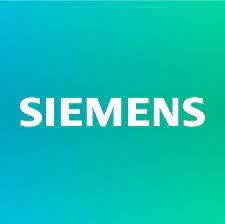Manufacturing Data Integration Software
A Manufacturing Data Integration Platform unifies digital and physical production environments by aggregating and harmonizing data from multiple systems in real time. It validates and aligns diverse operational metrics, ensuring accuracy, compliance, and optimal quality control while synchronizing every aspect of the manufacturing process.
This platform drives smart manufacturing by centralizing data from shop floor sensors, ERP, MES, and beyond, enabling agile, data-driven enhancements across operations.
Data Integration Challenges
Data integration is challenging when systems are siloed, use incompatible formats, or lack standardized communication protocols. These barriers lead to fragmented data, manual reconciliation, and delayed insights. Without seamless integration, manufacturers face inefficiencies, poor visibility, and difficulty scaling digital initiatives.

What Does Data Integration Software Do?
Data Integration Software connects disparate systems—such as ERP, MES, LIMS, and SCADA—into a unified data ecosystem. It consolidates and synchronizes data from multiple sources, enabling real-time visibility and seamless information flow across departments. This eliminates data silos, enhances decision-making, and supports end-to-end process automation in manufacturing environments.

Key Features of Manufacturing Data Integration Platform
Seamless Connectivity
Facilitates robust integrations across varied data sources and formats using standardized APIs, ensuring secure, consistent data exchange and interoperability factory-wide.
Advanced Analytics
Integrates with analytical tools to deliver predictive insights, trend detection, and real-time metrics. Empowers proactive decision-making for continuous operational improvements.
Unified Data Hub
Connects diverse manufacturing systems—ERP, MES, SCADA—into a centralized platform that streamlines data flow and real-time communication across all production operations.
Benefits of Using Manufacturing Data Integration Software
Enhanced Visibility
Offers a comprehensive real-time view of manufacturing data, boosting transparency and overall process oversight.
Improved Decisions
Aggregates data insights to support swift, data-driven decision-making that minimizes downtime and optimizes operations.
Operational Efficiency
Streamlines workflows and reduces redundancy, leading to smoother processes and significant cost reductions.
Faster Resolutions
Facilitates rapid issue detection and alerts, enabling swift problem resolution to minimize production disruptions.
Cost Savings
Eliminates manual data consolidation, reduces waste, and optimizes resource allocation to lower operational expenses.
Scalable Platform
Adapts easily to growing business needs with a modular architecture that integrates new data sources and technologies seamlessly.
Siemens Opcenter Execution
Snic Solutions is recognized as one of the elite organizations partnered with Siemens as a value-added reseller of Opcenter.
/About%20Page/Blake%20Digital%20Transformation%20Solutions.png?width=500&height=500&name=Blake%20Digital%20Transformation%20Solutions.png)

Software Integration
Data Integration Software connects systems like MES, ERP, LIMS, QMS, and SCADA to unify data across the manufacturing enterprise and eliminate silos.
What happens when you integrate?
Integration creates a centralized data flow, enabling real-time visibility and analytics across departments. This improves coordination, reduces duplication, and empowers smarter, faster decision-making.

From Our Blog
Stay up to date with what is new in our industry, learn more about the upcoming products and events.

How is a Gantt Chart Used in Manufacturing Process?
In manufacturing, Gantt charts are used to simplify production by visualising task…
.png)
Top Advantages of Laboratory Automation Systems
Are you curious about how laboratory automation can benefit your lab? Laboratory a…
.png)
What Is A Bidirectional LIMS?
LIMS bidirectional communication, or what is LIMS bidirectional, refers to the two…
Frequently Asked Questions
Have Question? We are here to help
What is a manufacturing data platform?
A manufacturing data platform centralizes production, quality, and machine data from various systems (ERP, MES, IoT) to enable real-time analytics, process optimization, and smarter decision-making.
What is a data integration platform?
A data integration platform connects, unifies, and synchronizes data from multiple sources—such as databases, applications, and sensors—into a single, accessible system for analysis and reporting.
What are the four 4 types of data integration methodologies?
-
ETL (Extract, Transform, Load)
-
ELT (Extract, Load, Transform)
-
Data Virtualization
-
Application Integration (via APIs or Middleware)
What is MIP in manufacturing?
MIP typically refers to Manufacturing Integration Platform—a system that connects disparate manufacturing software tools (ERP, MES, LIMS, etc.) to create a unified data environment.
What is integration in manufacturing?
Integration in manufacturing involves connecting various digital systems (ERP, MES, SCADA, inventory, etc.) so they can share real-time data and work together seamlessly across the production lifecycle.
What are examples of data integration?
Examples include syncing MES with ERP for inventory visibility, linking SCADA with QMS for real-time quality alerts, or integrating IoT sensors with analytics platforms to monitor machine health.
How is data used in manufacturing?
Data is used to monitor equipment performance, track production output, predict maintenance needs, reduce waste, optimize inventory, and ensure quality compliance through real-time insights.
Partner With Us To Reduce Your Technical Debt
Snic Solutions is recognized as one of the elite organizations partnered with Siemens as a value-added reseller of Opcenter.
/About%20Page/Blake%20Digital%20Transformation%20Solutions.png?width=500&height=500&name=Blake%20Digital%20Transformation%20Solutions.png)
